2019 Four Cam Jam: Celebrating the Porsche Fuhrmann Engine at VIR
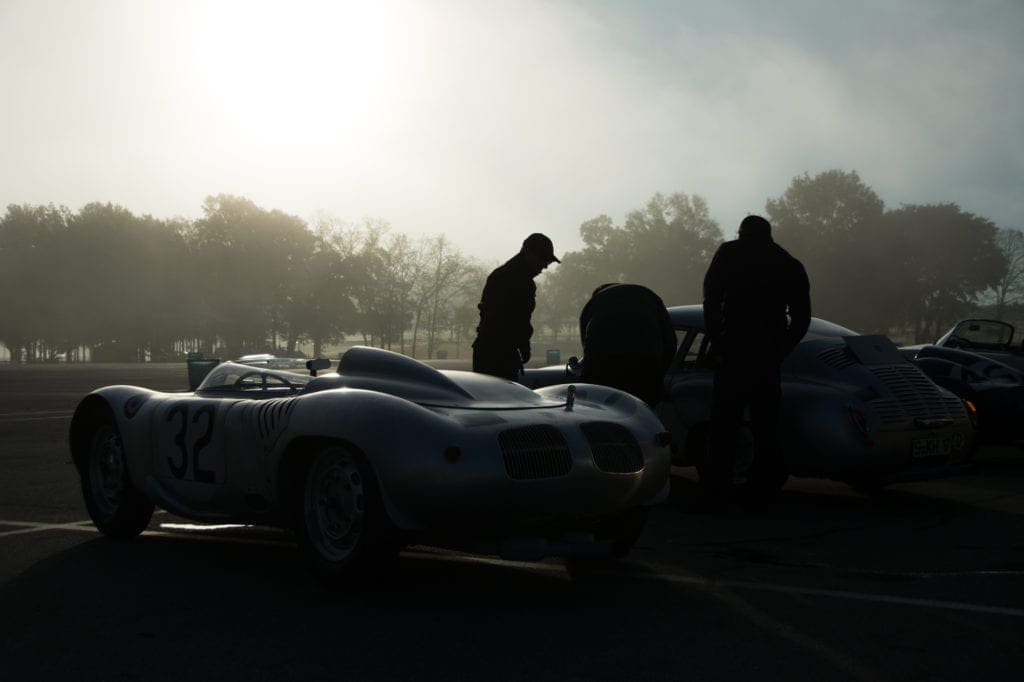
It was a gorgeous, autumn day in Virginia, and we spent it enjoying some of the most complicated automobile engines from the 1950’s and 60’s. The Porsche Fuhrmann Engine (Type 547 or “4-Cam”) was named after its creator/engineer Dr. Ernst Fuhrmann, and built from 1953 to 1964. So, we gathered together to celebrate these special engines with Revs Institute and Road Scholars at the Four Cam Jam.
For the second year in a row, a collection of Porsche Fuhrmann Type 547 4-cam cars hailing from all over the country (with even a few international guests included) gathered to show off on the Virginia International Raceway, affectionately called the VIR. There were more than 30 cars at the track ranging from a 1955 Porsche 550 Spyder to a 2019 Porsche 911 GT3 RS, with a 1968 911L Trans Am, a 2018 Corvette ZR1 and a Cobra and Ferrari thrown in for good measure. With letters like GT, GS, GTL, RS and RSR in the names, it was a smorgasbord of fast cars, with many impressive 4-cam cars alongside the others for additional enjoyment. The cars were divided into three groups for 25-minute track sessions throughout the day.
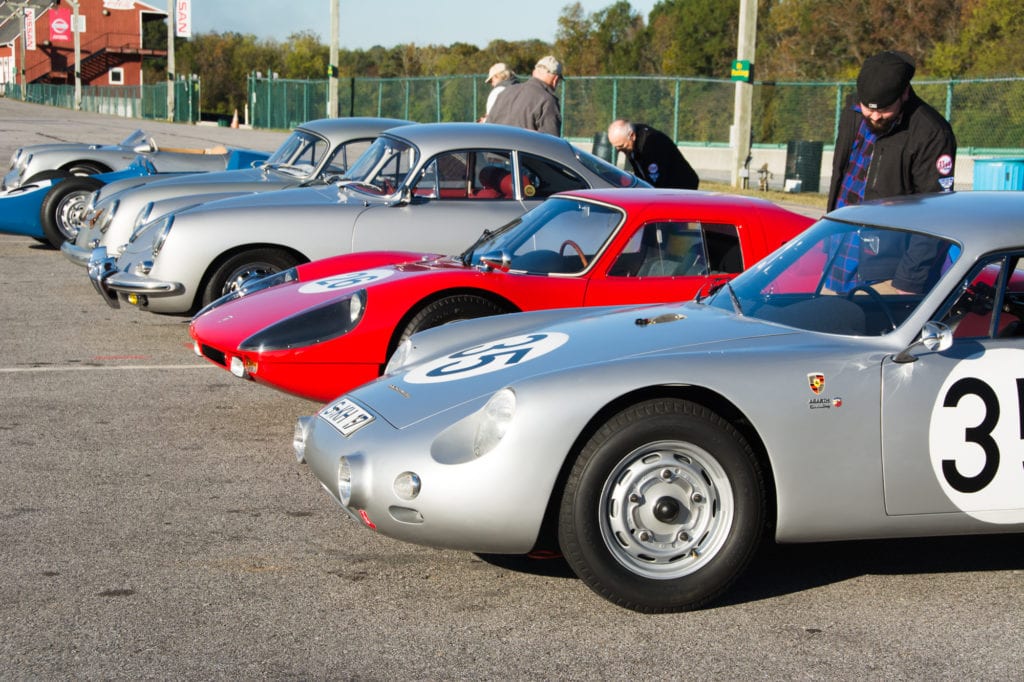
Last year, it was 38 degrees and raining during the inaugural Four Cam Jam. While the morning started off a bit chilly in the 40s, there was sunshine and comfortable temperatures in the 60s and 70s by late morning. The afternoon was warm enough that the air conditioning in the new 911 GT3 RS was much appreciated.
As a novice at the event, the generosity and congeniality of the participants was overwhelming. With professional race car drivers and experienced wheelmen like Gunnar Jeannette, Patrick Long and Jeff Zwart in the driver’s seats, watching the cars surge around the racetrack was exhilarating. Even more exciting was the chance to ride in three different examples of Porsche ingenuity. The order of the rides was perfectly arranged to demonstrate exactly how powerful and distinct each of these automobiles is.
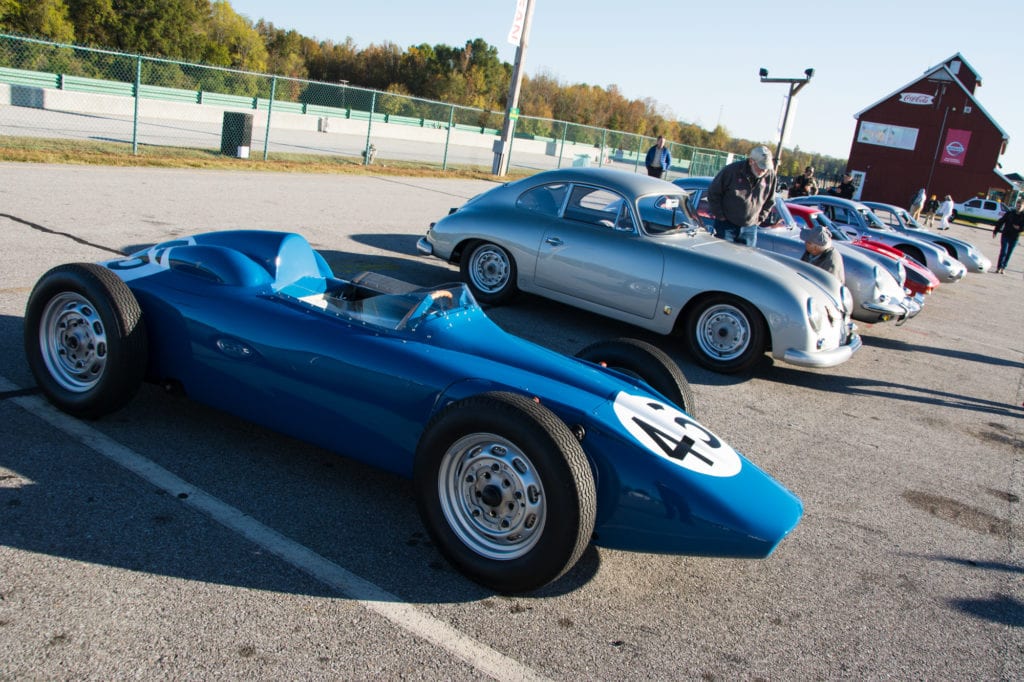
First, we took a few swift laps in the 1960 Abarth Carrera GTL. The Virginia International Raceway combines challenging turns with a blind crest and a few steep downhill twists, but has enough straights to build up true speed in between. As part of the group of 4-cam closed cars, starting with this ride was a gentle way to showcase the exceptional combination of the track, driver and automobile. Slipping through sharp turns and weaving through the section of track known as “the Snake” with Gunnar Jeannette at the wheel, the Abarth demonstrated a combination of speed and responsiveness, with just the right amount of hard work to make the laps feel quick, but perfectly balanced. Reaching top speeds just over 110 miles per hour, it was easy to imagine what it was like when the car was new.
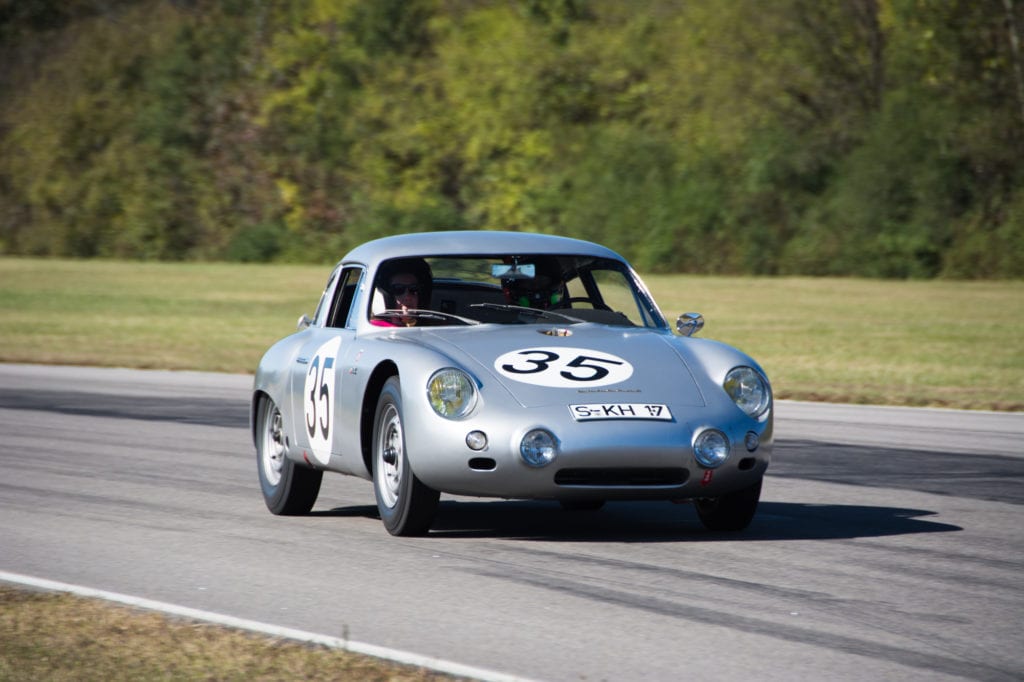
Taking a tour of the track, and learning the turns and elevation changes in a closed car made the exact same track in an open car slightly less terrifying. The ride in the open 1958 Porsche 356 Carrera GT Speedster with the wind blowing by added a whole new level of excitement. While top speeds were nearly identical, the sound and feel of the wind amplified the perception of speed in the open car. Jeannette showcased his mastery of the track with aplomb. Experiencing the blind crest and hairpin turns of the track for the first time in an open car might have been enough excitement for one day, so it’s a good thing the closed car orientation laps happened before.
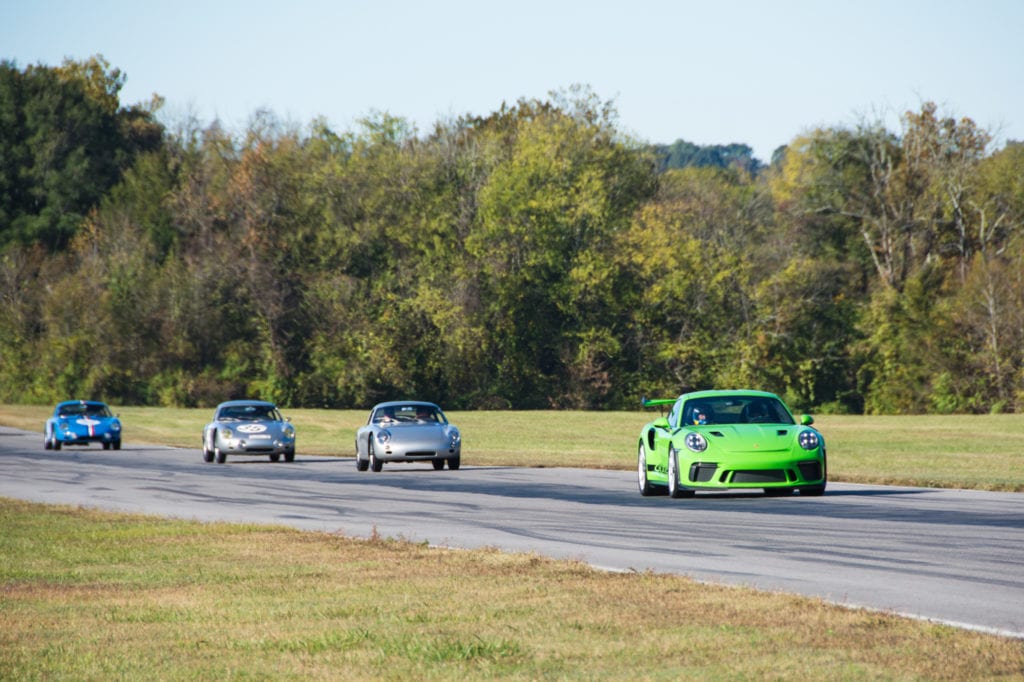
A few final laps in the 2019 Porsche 911 GT3 RS with Porsche factory driver, and Luftgekühlt co-founder, Patrick Long at the wheel were a perfect bookend to a flawless day. The Lizard Green car was the polar opposite of the classic silver paint on many of the vintage Porsches. Drivers in modern-era cars were reaching speeds well over 160 miles per hour, at least 50 miles per hour faster than the first-generation of 4-cam automobiles. But, encapsulated in modern comfort, it was hard to feel the differential in speed. The ride was sophisticated, and watching the curves flash by so quickly was thrilling. But, the comfort of the car and the advanced traction dampened the perception of the finesse required to make it around the track. Please don’t misunderstand. Even in a modern vehicle, the talent, reflexes, practice and expertise required to safely navigate at these speeds is not to be underestimated. It is not the driver’s fault that the comparison between cool air conditioning and the wind racing through your hair is worlds apart. That the sophistication and performance of the modern cars, the way they grip the track and absorb the feel of the road creates an entirely different experience.
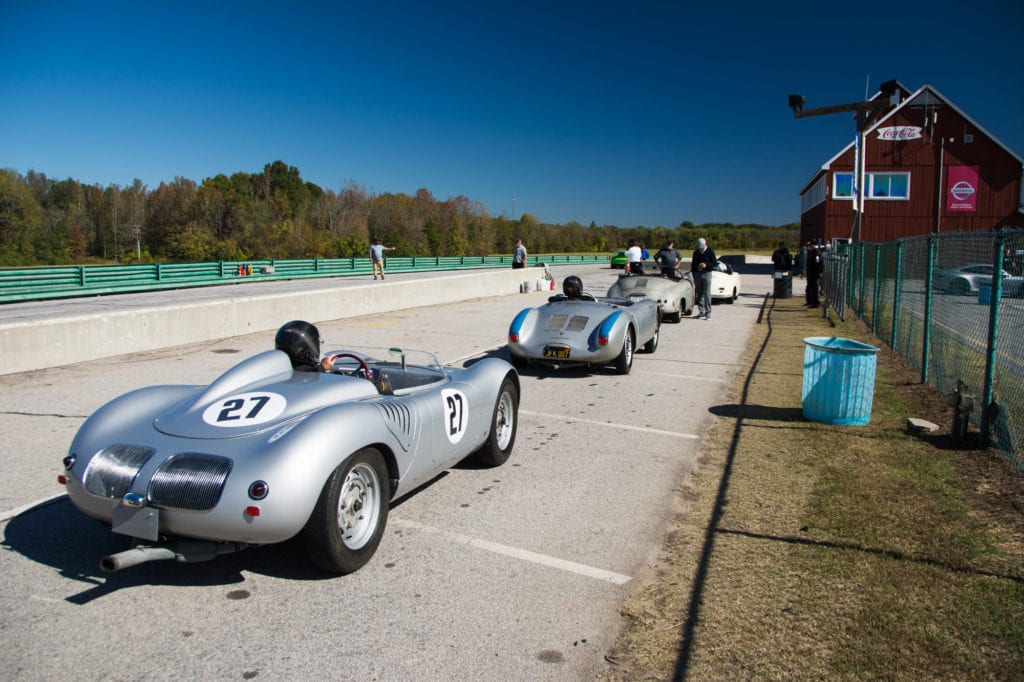
What makes such a unique group of people come together to enjoy this specific type of automobile engine? For nearly everyone, it was mostly about the appreciation for the restoration and care that keeps these motors running. And definitely about fun. One of the most innovative configurations of its day, the 4-cam engine propelled Porsche to new levels of racing success. As time goes by, there are fewer people that are able to rebuild and maintain this unique invention. And so, a celebration of these cars and the people that have so thoughtfully preserved and restored them to keep them in track-ready condition was in order. Seeing the power and elegance of 4-cam cars in action may be reward enough, but being able to celebrate the dedication required to maintain and race these cars with this congenial community is reason enough to come back to the Four Cam Jam next year.

